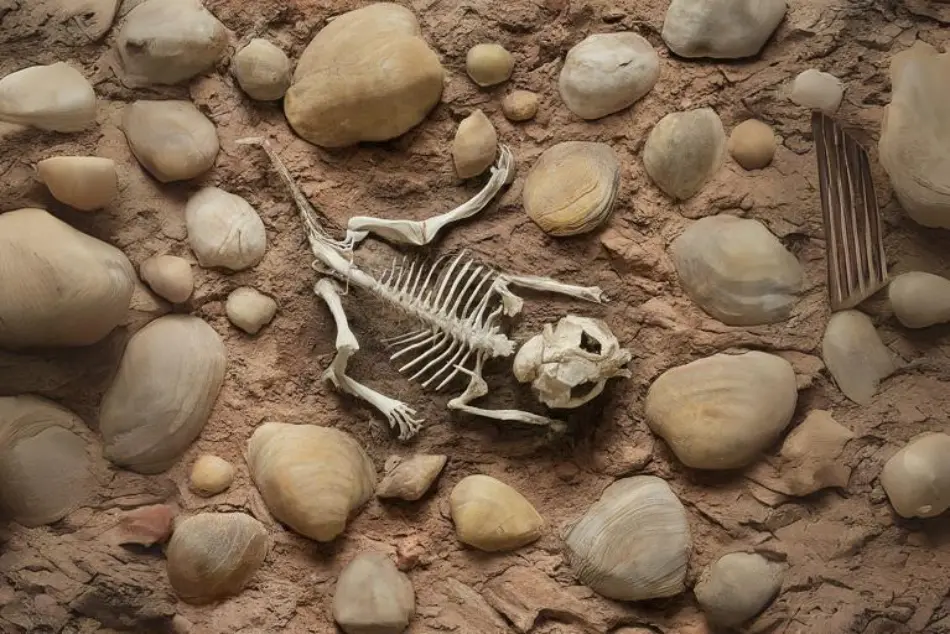These coastal chinchillas behave differently from any other known group, whether they’re considered a new subspecies, a species, or simply a unique population, baffling scientists with their unprecedented actions.
In 2020, near the Chilean port city of Antofagasta, a man walking his dog found a small mammal skull on a rocky hillside overlooking the Pacific Ocean. He showed it to researchers, Alejandro Peñaloza and Jaime Jiménez. They were surprised because the skull belonged to a long-tailed chinchilla, a species usually found high up in the Andes Mountains. Until then, scientists didn’t know chinchillas lived near the coast.
“I was really surprised,” says Jiménez, a scientist at the University of North Texas who’s been studying chinchilla habitats for more than 30 years. We’ve never seen chinchillas around here before, especially not near the coast. It just didn’t add up.
Excited to uncover the mystery, the researchers immediately began their investigation. They found lots of tiny paw prints and rodent droppings scattered around the rocks. But what they really hoped for was to snap some photos. So, they set up camera traps with apple slices as bait. Their excitement grew when they saw dozens of images of the rodents. However, it was a surprise when they checked the cameras later and realized they had just missed seeing the chinchillas. After leaving the area, they took a picture only 11 minutes later.
The video shows that coastal chinchillas look quite different from their Andean relatives. According to a recent report by scientists, mountain chinchillas are bigger, have thick fur, and round ears, while coastal ones are smaller, have smoother fur, and long rabbit-like ears. Besides their unique appearance, the coastal chinchillas were spotted moving around during the day, which is new for wild chinchillas.
Jiménez says, “These animals usually only come out at night, so this change might mean there are fewer predators around or that they’re adapting to their environment.”
The discovery that long-tailed chinchillas are living along the coast is shaking up what scientists thought they knew about these creatures. According to Fabian Jaksik, from the Chilean Academy of Sciences, who wasn’t part of the study, this discovery is important because it’s the furthest north that long-tailed chinchillas have ever been found in Chile, even in history.

Coastal Chinchillas: Surviving in a Unique Environment
Coastal chinchillas live in a unique environment between the Atacama Desert and the Pacific Ocean. They thrive there because the sea nearby keeps temperatures moderate, and they benefit from a thick fog called the camanchaca that rolls in from the ocean, watering the plants.
Researchers are puzzled by what these chinchillas eat. Unlike their cousins in the Andes, who mainly eat grass, coastal chinchillas live in areas where there’s no grass but lots of plants with either toxins or thorns. Scientists think they might be eating something new or managing to eat a bit of everything and survive the toxins, but it’s just a guess for now.
With so many differences in how they look, act, and live, scientists aren’t sure if coastal chinchillas are just a different type of the same species or a completely new species altogether. They believe that understanding these chinchillas better will help answer these questions.
Coastal chinchillas are also making scientists think about the future of their species. While Andean long-tailed chinchillas have been hunted a lot in the past and are still losing their homes to mining, the coastal ones seem to be doing well. If they’re the same species, it means there might be more long-tailed chinchillas out there than we thought, which is good news for their survival.
Experts think that coastal chinchillas might have escaped hunting because they live in such isolated areas. This gives hope that there are more of them out there that we haven’t found yet.
Related Topics:
- Fruits and Veggies Chart for Small Rodent Pets: New Nutritious Guide 2024
- Can Chinchillas Save Family Business | My Personal Experience
- Celebrating 100 Years of Chinchillas History in the United States: A Brief History
